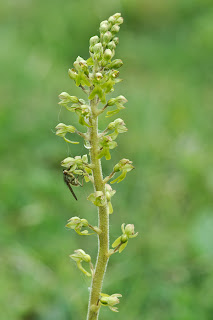



Sunday was spent in Norfolk. Over the previous few days, there had been a big influx of the migrants that one would normally expect to see at this time of year-Temminck's Stints, Black Terns, Icterine Warblers and so on. By the time the weekend arrived, the weather had changed and it looked like we had missed the boat. Still, it looked like there would be a few showers and the wind seemed promising.
Titchwell seemed pretty quiet. We had missed a Spoonbill by a few minutes, and apart from an adult Little Gull and a pair of first summer Mediterranean Gulls there were only a few other things of note-two Common Sandpiper and a few Dunlin and Godwits. The sea held three Eider with a few terns offshore, but along the shoreline there were around thirty Sanderling in various plumages which were quite approachable.
The fen walkway held a fine stand of Southern Marsh Orchid, and we got to see a Water Vole, but there were no dragonflies.
We left Titchwell and headed to Blakeney Harbour where the main target had been seen, at which point it started to rain. The Collared Pratincole, the first we had seen for at least ten years proved difficult to locate, hawking for insects like a hybrid brown tern/House Martin over the marsh. It remained very distant, and on the ground was often hidden from view, but over a period of twenty minutes the views were sufficient to allow identification.
Nearby we spent an hour or so in the north hide at Cley, where a Spoon bill showed fairly well, but again, there were few migrant waders to see-one Greenshank, a few Godwits, as well as a few Little Terns. Some time after we left, we heard that a Roseate Tern was seen, and one of the other scrapes held a Temminck's Stint.
Our final destination, as it turned out was the raptor watch-point at Swanton Novers, a place we had not been to for several years. It was once the place to see Honey Buzzard in Norfolk, but in recent years the nearby watch-point at Great Ryburgh and part of the same complex of woods had been more reliable. We missed the bird by a few minutes-nothing unusual though as it often takes several visits to get good views. We did see several Common Buzzard, as well as a fly by Red Kite over an hour or so, but the weather decided to deteriorate so we left earlier than expected.






















